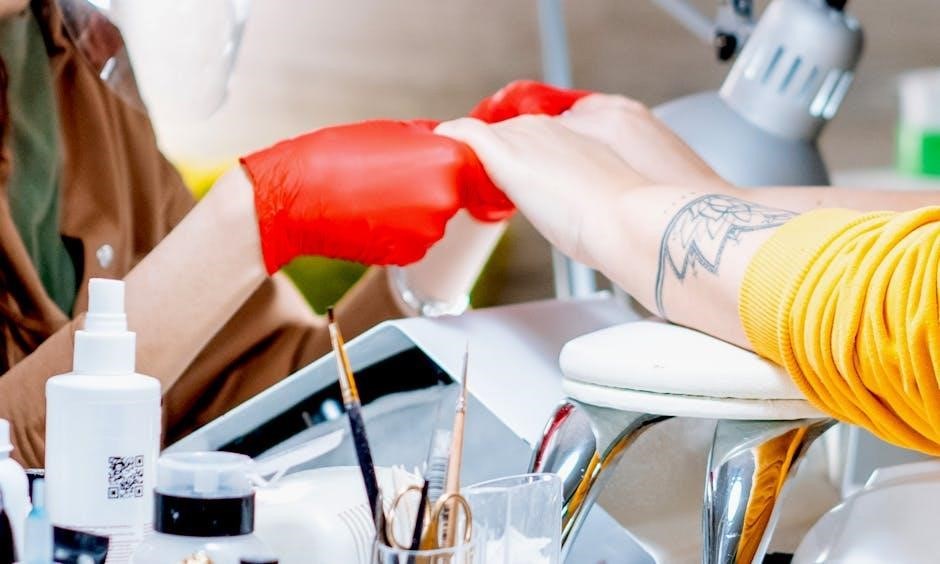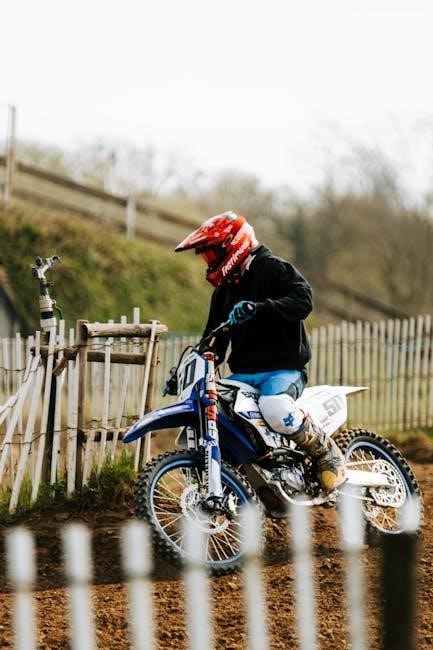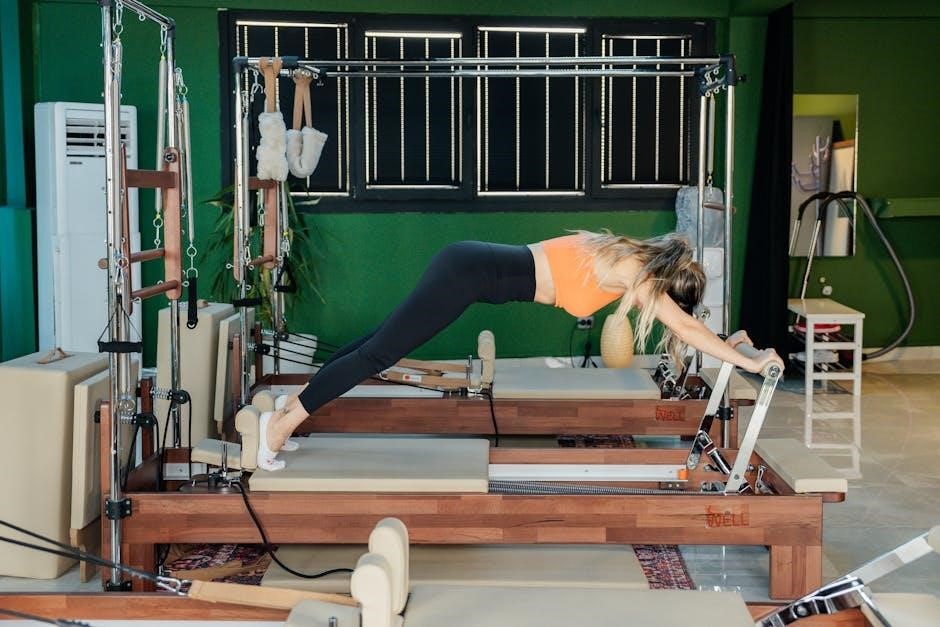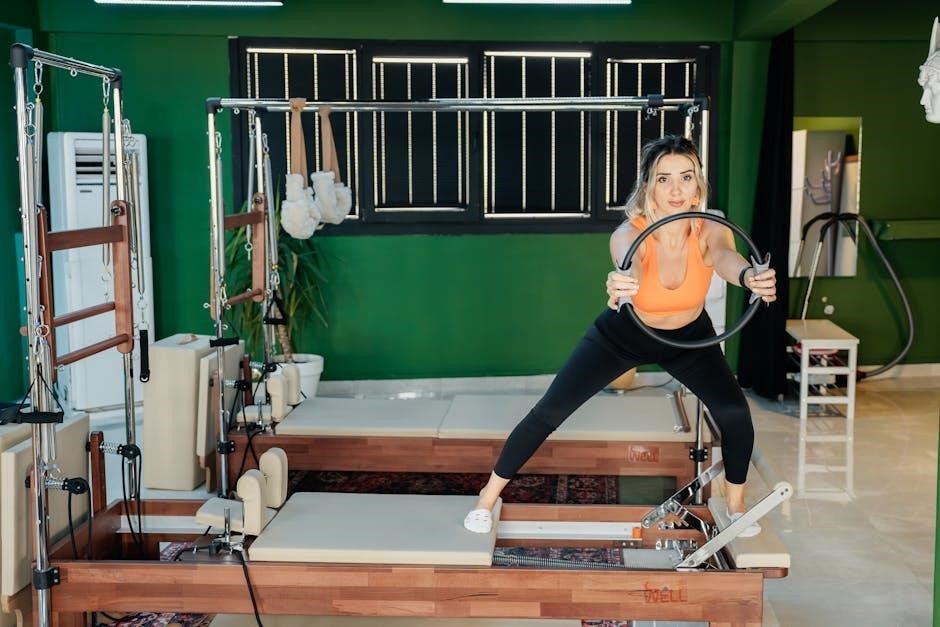The Synthes Tibial Nail Technique is a widely used surgical method for treating tibial fractures‚ utilizing a titanium alloy nail with advanced locking options for stability.
It employs a guide wire for precise insertion‚ ensuring proper fracture alignment and minimizing complications‚ making it a reliable choice for orthopedic surgeons worldwide.
1.1 Overview of Intramedullary Nailing in Tibial Fractures
Intramedullary nailing is a surgical technique for stabilizing tibial fractures by inserting a metal nail into the bone’s medullary canal. This method provides internal fixation‚ promoting healing while allowing early mobility. The nail acts as an internal splint‚ restoring alignment and stability to the fractured bone.
The procedure often involves using a guide wire to ensure accurate nail placement‚ with locking screws for added stability. Postoperative care focuses on wound healing‚ pain management‚ and rehabilitation to restore function and strength to the affected limb.
1.2 Historical Development of the Synthes Tibial Nail System
The Synthes Tibial Nail System has evolved significantly since its introduction‚ with advancements in design and functionality. Initially developed to address tibial fractures‚ it gained popularity for its effectiveness in stabilizing complex fracture patterns. Over the years‚ improvements such as advanced locking options and titanium alloy construction have enhanced its performance. The system’s historical development reflects ongoing innovations in orthopedic surgery‚ aiming to improve patient outcomes and simplify surgical procedures for orthopedic specialists.
1.3 Indications for Using the Synthes Tibial Nail
The Synthes Tibial Nail is indicated for various tibial fractures‚ including open and closed fractures‚ comminuted or segmental fractures‚ and fractures requiring precise alignment. It is suitable for both acute and nonunion cases‚ offering stability in challenging fracture patterns. The system’s versatility allows its use in suprapatellar and infrapatellar approaches‚ making it a preferred choice for orthopedic surgeons to achieve optimal fracture stabilization and promote healing in diverse clinical scenarios.

Preoperative Planning and Preparation
Preoperative planning involves thorough patient evaluation‚ imaging‚ and fracture classification to guide surgical strategy. Accurate nail sizing and equipment setup are critical for optimal outcomes. A skilled surgical team ensures precise execution‚ minimizing complications and promoting effective fracture stabilization.
2.1 Patient Assessment and Diagnosis
Patient assessment begins with a detailed clinical evaluation‚ including a thorough examination of wounds‚ neurovascular status‚ and compartment syndrome risks. Imaging such as X-rays and CT scans are essential for fracture classification and alignment assessment. Documentation of nerve function and pulse is crucial‚ with specific attention to potential complications. Early antibiotic administration is prioritized for open fractures‚ followed by surgical debridement within established timeframes to minimize infection risks and ensure proper fracture stabilization.
2.2 Imaging and Fracture Classification
Imaging is critical for accurate diagnosis‚ starting with orthogonal X-rays to assess fracture alignment and anatomy. CT scans are often used for complex fractures‚ especially in the proximal or distal thirds‚ to evaluate joint involvement. Fractures are classified using systems like AO/OTA to guide treatment. Proper imaging ensures precise measurement of nail length and diameter‚ aiding in preoperative planning. It also helps identify potential complications‚ such as additional injuries to the ankle or knee‚ ensuring a comprehensive treatment approach for tibial fractures.
2.3 Choosing the Appropriate Nail Size and Length
Accurate nail sizing is crucial for optimal outcomes. Preoperative templating using AP X-rays helps estimate nail length and diameter; The Expert Tibial Nail system offers sizes from 8mm to 13mm‚ catering to various fracture patterns. Proper sizing ensures a snug fit within the medullary canal‚ enhancing stability and minimizing complications. The nail length should span the entire tibial shaft‚ while its diameter must not compromise cortical contact. Correct sizing is essential for achieving proper fracture alignment and preventing malunion or nonunion.
2.4 Surgical Team Preparation and Equipment Setup
Thorough preparation ensures smooth execution of the Synthes Tibial Nail procedure. The surgical team must include experienced orthopedic surgeons‚ assistants‚ and radiographers. Essential equipment includes the Expert Tibial Nail system‚ guide wires‚ aiming arms‚ and a fluoroscopy unit for real-time imaging. Proper sterilization and organization of instruments are critical. The operating room should be set up to accommodate the suprapatellar or infrapatellar approach‚ with adequate lighting and access for imaging. A well-prepared setup minimizes operative time and reduces the risk of complications.

Components and Instruments of the Synthes Tibial Nail System
The Synthes Tibial Nail System includes titanium alloy nails with advanced locking options‚ guide wires‚ and specialized instruments like aiming arms for precise insertion and alignment.
These components are designed for optimal stability and versatility in treating various tibial fractures‚ ensuring secure fixation and promoting proper healing.
3.1 Design Features of the Expert Tibial Nail
The Expert Tibial Nail is made from a robust titanium alloy‚ offering durability and biocompatibility. Its design includes advanced proximal and distal locking options‚ allowing precise control over fracture stabilization‚ especially in complex patterns.
The nail features cancellous locking bolts for enhanced bone purchase and an end cap to create a fixed-angle construct. Available in both cannulated and solid forms‚ it accommodates varying surgical needs‚ with a ball-tipped guide wire facilitating accurate insertion.
3.2 Accessories and Instrumentation for the Procedure
The procedure requires specific accessories‚ including guide wires‚ aiming arms‚ and locking bolts‚ to ensure accurate nail placement and secure fracture fixation.
Dedicated instrumentation‚ such as insertion handles and reaming tools‚ facilitates efficient surgical steps‚ while radiolucent triangles and fracture traction tables aid in maintaining proper alignment during the operation;
3.3 Guide Wires and Their Role in Nail Insertion
Guide wires are essential for precise nail insertion‚ ensuring proper alignment within the intramedullary canal. They help navigate the nail through the fracture site‚ maintaining reduction and preventing malalignment.
A ball-tipped guide wire is used for cannulated nails‚ allowing it to pass through the nail without exchange after reaming. This ensures accurate placement and stability‚ particularly in complex fracture patterns.

Patient Positioning and Anesthesia
Patient positioning often involves supine or semi-extended approaches‚ with or without a bolster. Anesthesia options include general or combined regional blocks for optimal pain management.
4.1 Optimal Patient Positioning for Tibial Nailing
Optimal patient positioning for tibial nailing involves supine or semi-extended approaches‚ often using a radiolucent triangle or fracture traction table to maintain reduction. The suprapatellar approach‚ where the knee is slightly flexed‚ allows better access to the intramedullary canal‚ reducing malalignment risks. Alternatively‚ the infrapatellar approach positions the knee in a figure-of-four‚ relying on an assistant to maintain alignment. Proper positioning ensures accurate guide wire placement and minimizes complications during nail insertion.
General anesthesia or regional blocks are commonly used‚ with the suprapatellar method often preferred for its stability and alignment benefits‚ despite requiring specialized equipment.
4.2 Anesthetic Options and Regional Block Techniques
Anesthesia for tibial nailing can be performed under general anesthesia or combined with regional blocks. Femoral and sciatic nerve blocks provide effective pain management‚ covering the anterior knee and lower leg. Regional anesthesia does not increase the risk of delayed compartment syndrome diagnosis‚ as pain from compartment syndrome often exceeds analgesic effects. Patient selection is crucial‚ with blocks cautiously used in high-risk cases. Postoperative pain control is enhanced‚ especially for patients undergoing fasciotomies.
4.3 Use of Fluoroscopy in Surgical Alignment
Fluoroscopy is essential for real-time visualization during tibial nailing‚ ensuring accurate fracture reduction and nail placement. It allows surgeons to verify alignment and locking screw positions‚ reducing malunion risks. The suprapatellar approach often shortens fluoroscopy time‚ enhancing efficiency. Proper positioning and imaging techniques minimize radiation exposure while maintaining surgical precision‚ making fluoroscopy a critical tool in achieving optimal outcomes.

Surgical Approach and Technique
The surgical approach for the Synthes Tibial Nail Technique includes suprapatellar and infrapatellar methods‚ each tailored to specific fracture types. Proper technique ensures accurate reduction and alignment‚ crucial for successful outcomes and minimizing complications.
5.1 Suprapatellar Approach: Advantages and Technique
The suprapatellar approach offers reduced knee pain‚ shorter fluoroscopy time‚ and improved fracture reduction accuracy. It involves positioning the patient supine‚ often with a bolster or radiolucent triangle. A guide wire is inserted under fluoroscopic guidance‚ followed by nail placement over the wire. This method minimizes soft tissue disruption and facilitates easier fracture alignment‚ making it ideal for complex fracture patterns. Proper technique ensures optimal outcomes and faster patient recovery.
5.2 Infrapatellar Approach: Indications and Limitations
The infrapatellar approach is typically used for fractures in the distal tibia and is less invasive than the suprapatellar method. It is ideal for fractures with minimal proximal extension but may cause knee pain postoperatively. The approach requires precise patient positioning‚ often using a bolster or figure-of-four setup. Limitations include difficulty in maintaining fracture reduction and potential challenges with fluoroscopic visualization. Proper guide wire placement is critical to avoid malalignment and ensure successful nail insertion. This method is not recommended for very proximal fractures.
5.3 Reduction Techniques for Fracture Alignment
Fracture reduction is achieved manually‚ using a reduction table‚ or with external devices like distractors. The Staffordshire Orthopaedic Reduction Machine (STORM) aids in maintaining alignment during nailing. Guide wires help secure fragment alignment. Proper reduction ensures accurate nail placement‚ minimizing malunion risks. Fluoroscopy verifies alignment pre- and post-nail insertion. Stability is crucial for healing‚ and precise techniques reduce soft tissue damage‚ promoting optimal recovery outcomes.
5.4 Guide Wire Placement and Nail Insertion
Guide wire placement is critical for accurate nail insertion. The wire marks the intramedullary canal path‚ ensuring proper alignment of fracture fragments. Cannulated nails are inserted over the guide wire‚ while solid nails do not require this step. The nail is advanced under fluoroscopic guidance until the tip clears the fracture site. Once aligned‚ the guide wire is withdrawn‚ and the nail is fully seated. Compression and locking screws are then used to secure the nail‚ ensuring stability and alignment for optimal healing.

Nail Insertion and Locking
The nail is inserted over the guide wire‚ ensuring proper alignment under fluoroscopic guidance. Locking screws are then applied proximally and distally to secure the nail in place.
6.1 Insertion of the Cannulated or Solid Nail
The Synthes Tibial Nail system offers both cannulated and solid nail options. Cannulated nails are inserted over a guide wire‚ ensuring precise alignment‚ while solid nails are inserted directly without a wire.
Both options are designed for optimal stability‚ with the choice depending on fracture complexity and surgeon preference. Fluoroscopic guidance ensures accurate placement and alignment during the insertion process.
6.2 Proximal and Distal Locking Options
The Synthes Tibial Nail system features advanced proximal and distal locking mechanisms. Proximal locking bolts provide enhanced bone purchase‚ while distal options include specific screws for complex fracture patterns.
Distal locking allows precise control‚ especially for Tillaux-type fractures. The end cap converts the nail into a fixed-angle construct‚ enhancing stability. This dual-locking system ensures optimal fracture stabilization‚ accommodating varied fracture configurations and promoting effective healing.
6.3 Compression Screw and Nail Holding Screw Techniques
The Compression Screw is inserted to secure the nail within the proximal fragment‚ enhancing stability. This technique ensures proper alignment and prevents axial migration of the nail.
The Nail Holding Screw stabilizes the nail during insertion‚ preventing rotation. Once the nail is fully seated‚ the holding screw is removed‚ allowing the Compression Screw to finalize fixation‚ promoting optimal healing conditions.
Postoperative Management
Postoperative care involves monitoring for complications‚ wound management‚ and early mobilization. Pain is controlled with analgesics‚ and rehabilitation begins with weight-bearing status as per surgeon’s instructions.
7.1 Wound Care and Dressing Techniques
Proper wound care is crucial for preventing infection and promoting healing. The wound should be cleaned with saline solution‚ and dressings applied to keep it dry and sterile. For open fractures‚ debridement is essential to remove contaminated tissue‚ followed by primary closure when possible. Dressings are changed regularly‚ and signs of infection‚ such as redness or drainage‚ are monitored closely. Antibiotic therapy may be continued postoperatively to reduce infection risk‚ ensuring optimal recovery and minimizing complications.
7.2 Pain Management and Rehabilitation Protocol
Pain management begins with regional anesthesia or patient-controlled analgesia postoperatively. Early mobilization is encouraged‚ starting with non-weightbearing activities and progressing to weightbearing as healing allows. Physical therapy focuses on restoring strength‚ range of motion‚ and gait training. Patients use crutches or walkers initially to avoid putting stress on the fracture site. Monitoring for signs of compartment syndrome is crucial‚ especially in the first 48 hours. Rehabilitation aims to achieve pre-injury function‚ with regular follow-ups to assess progress and address any complications promptly.
7.3 Follow-Up and Imaging Schedule
Postoperative follow-up involves regular clinical and radiological assessments to monitor healing and hardware integrity. Immediate post-op imaging confirms proper nail and locking screw placement. Follow-up X-rays at 6-8 weeks ensure fracture alignment and callus formation. Further imaging at 12-16 weeks assesses union progress. For non-union or delayed union cases‚ CT scans are recommended. Patients are typically seen at 6‚ 12‚ and 24 weeks postoperatively‚ with annual check-ups thereafter to ensure long-term stability and functional recovery.
Complications and Their Management
Common complications include infection‚ malunion‚ and nonunion. Infections are prevented with antibiotics and proper wound care. Malunion and nonunion require revision surgery or bone grafting for correction.
8.1 Common Complications in Tibial Nailing
Common complications in tibial nailing include infections‚ malunion‚ and nonunion. Infections can arise from surgical wounds or contaminated fractures‚ requiring antibiotics or surgical debridement. Malunion occurs when the fracture heals in improper alignment‚ while nonunion is a failure to heal‚ often due to inadequate stabilization or poor bone quality. Additionally‚ knee pain and hardware-related issues‚ such as nail protrusion or screw loosening‚ may occur postoperatively.
Proper surgical technique‚ postoperative care‚ and patient compliance are critical to minimizing these complications and ensuring optimal outcomes.
8.2 Prevention and Treatment of Infections
Infection prevention in tibial nailing involves immediate debridement of open fractures‚ antibiotic administration within one hour of injury‚ and meticulous wound care. Postoperative IV antibiotics are commonly used to reduce infection risk. For contaminated wounds‚ surgical debridement and irrigation are essential before nail insertion.
Treatment of infections may require hardware removal‚ prolonged antibiotic therapy‚ or surgical drainage. In severe cases‚ external fixation or staged reconstruction may be necessary to achieve healing and prevent further complications.
8.3 Management of Malunion or Nonunion
MALUNION OR NONUNION IN TIBIAL FRACTURES
Malunion or nonunion in tibial fractures requires prompt intervention. Corrective osteotomy and bone grafting are common treatments. Dynamization of the nail‚ where the locking screws are removed to promote healing‚ may be considered. In cases of nonunion‚ exchanging the nail or adding a plate can enhance stability. Compression screws and bone grafting are often used to stimulate healing. Regular follow-ups and imaging are crucial to monitor progress and address complications early.

Alternative Techniques and Comparisons
Alternative techniques to the Synthes Tibial Nail include external fixation and plate fixation. These methods are considered based on fracture complexity‚ patient condition‚ and surgeon preference.
9.1 Comparison with Other Tibial Nailing Systems
The Synthes Tibial Nail System stands out for its advanced locking options and guide wire compatibility‚ offering superior stability in complex fractures. Other systems‚ like the TN-ADVANCED‚ provide similar intramedullary fixation but lack the same versatility in distal locking. While alternative nails may offer solid or cannulated designs‚ the Synthes system’s titanium alloy and enhanced proximal locking bolts ensure better bone purchase‚ making it a preferred choice for challenging fracture patterns and difficult alignments.
9.2 External Fixation as an Alternative Method
External fixation is a viable alternative to intramedullary nailing‚ particularly for complex fractures with severe soft tissue damage. It allows for stabilization without direct contact with the fracture site‚ reducing infection risks. However‚ external fixators require meticulous patient care and may lead to prolonged healing times. While they offer flexibility in managing diverse fracture patterns‚ they are less favored for diaphyseal tibial fractures due to higher infection risks compared to the Synthes Tibial Nail System.
9.3 Plate Fixation vs. Intramedullary Nailing
Plate fixation and intramedullary nailing are both effective for tibial fractures but serve different clinical scenarios. Plate fixation is often preferred for fractures near joints or with complex patterns‚ offering direct visualization and stability. However‚ it poses higher infection risks due to soft tissue disruption. Intramedullary nailing‚ like the Synthes system‚ is favored for diaphyseal fractures‚ minimizing soft tissue damage and promoting faster healing. The choice depends on fracture location‚ pattern‚ and patient-specific factors‚ with nailing generally preferred for its lower infection rates and biomechanical advantages.

Case Studies and Clinical Outcomes
Case studies highlight successful outcomes using the Synthes Tibial Nail‚ demonstrating effective fracture stabilization and proper healing in complex tibial fractures‚ showcasing its reliability and clinical efficacy.
10.1 Successful Case Examples Using the Synthes Tibial Nail
The Synthes Tibial Nail has been successfully used in various complex tibial fractures‚ including open and closed injuries. Notable cases involve its application in distal third fractures with ankle injuries‚ where the nail provided stable fixation. Its titanium alloy design and advanced locking options ensured proper healing and alignment. The suprapatellar approach‚ often utilized‚ minimized knee pain and improved recovery. These examples highlight the nail’s reliability in treating challenging fractures with minimal complications‚ making it a preferred choice for orthopedic surgeons.
10.2 Lessons Learned from Challenging Cases
Challenging cases with the Synthes Tibial Nail highlight the importance of precise preoperative planning and soft tissue management. Difficulties in achieving proper alignment and stabilization in complex fractures emphasize the need for meticulous reduction techniques. Cases with significant soft tissue damage underscore the importance of early debridement and fasciotomy to prevent infection. Additionally‚ managing highly contaminated wounds requires strict adherence to British Orthopaedic Association guidelines. These insights improve surgical outcomes and stress the value of combining orthopedic and plastic surgical expertise for optimal results in complex tibial fractures.

Expert Tips and Best Practices
Ensure precise fracture reduction‚ use fluoroscopy for alignment‚ and avoid over-reaming. Proper nail sizing and locking screw placement are critical for optimal stability and patient outcomes.
11.1 Surgical Pearls for Optimal Results
Ensure proper patient positioning‚ using the suprapatellar approach for better fracture visualization. Use fluoroscopy to confirm alignment and guide wire placement. Avoid over-reaming to prevent thermal necrosis. Insert the nail slowly‚ maintaining reduction throughout. For complex fractures‚ utilize the Staffordshire Orthopaedic Reduction Machine (STORM) to stabilize bone ends. Ensure distal locking screws are placed under direct visualization to prevent malposition. Postoperatively‚ emphasize early mobilization and weight-bearing as tolerated for faster recovery.
11.2 Avoiding Common Pitfalls in the Technique
Prevent malalignment by ensuring accurate guide wire placement and fluoroscopic confirmation. Avoid excessive reaming to reduce the risk of thermal necrosis and comminution. Be cautious with distal locking to prevent screw misplacement. In cases of poor bone quality‚ use cancellous locking bolts for enhanced stability. Monitor for compartment syndrome postoperatively‚ especially in high-energy fractures. Avoid using a tourniquet to maintain blood flow and reduce thermal damage risk during reaming and nail insertion.
The Synthes Tibial Nail Technique remains a cornerstone in treating tibial fractures‚ offering stability and precision. Future advancements in material science and nail design are anticipated.
12.1 Summary of the Synthes Tibial Nail Technique
The Synthes Tibial Nail Technique is a surgical procedure for treating tibial fractures using an intramedullary nail. It involves precise insertion over a guide wire‚ ensuring proper alignment and stability. The technique is suitable for both open and closed fractures‚ offering advanced locking options for complex fracture patterns. Postoperative care includes wound management and rehabilitation to restore mobility and strength. The method is widely adopted due to its effectiveness in achieving fracture union and minimizing complications.
12.2 Advances in Tibial Nailing Technology
Recent advancements in tibial nailing technology include improved nail designs‚ such as titanium alloy materials for enhanced strength and biocompatibility. Proximal and distal locking systems have been refined for better fracture stabilization. The development of cannulated nails allows for guide wire-assisted insertion‚ improving accuracy. Additionally‚ the suprapatellar approach has gained popularity‚ reducing knee pain and promoting faster recovery. Ongoing innovations focus on minimizing complications and optimizing outcomes‚ ensuring the Synthes Tibial Nail remains a leading choice for orthopedic surgeons.

References and Further Reading
- OrthOracle: Provides detailed step-by-step instructions and high-resolution images for the Synthes Tibial Nail technique.
- Depuy Synthes Expert Tibial Nail User Manual: Offers comprehensive technical specifications and surgical recommendations.
- Wang et al. (2018): Meta-analysis highlighting advantages of the suprapatellar approach in tibial nailing.
13.1 Key Publications on Tibial Nailing
Key publications on tibial nailing include studies by Wang et al. (2018)‚ which highlight the suprapatellar approach’s benefits‚ and Trafton’s work on fracture alignment. The OrthOracle platform offers certified CME materials and step-by-step guides for the Synthes Expert Tibial Nail. Additionally‚ the Depuy Synthes Expert Tibial Nail User Manual provides detailed technical specifications and surgical recommendations for optimal outcomes in tibial fracture management.
13.2 Online Resources and Surgical Guides
Prominent online resources include the OrthOracle platform‚ offering a comprehensive guide with high-resolution images and certified CME materials. The Depuy Synthes Expert Tibial Nail User Manual provides detailed instructions and technical specifications. Additional resources such as surgical technique videos and case studies are available on platforms like YouTube and medical education websites‚ aiding surgeons in mastering the technique. These guides are essential for both novice and experienced professionals seeking to refine their skills in tibial nailing procedures.